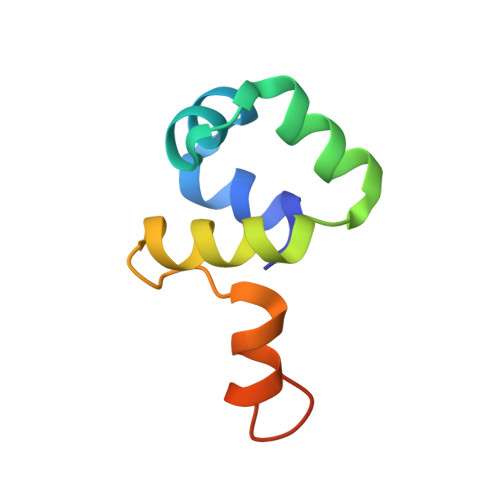N15 Cro and lambda Cro: orthologous DNA-binding domains with completely different but equally effective homodimer interfaces.
Dubrava, M.S., Ingram, W.M., Roberts, S.A., Weichsel, A., Montfort, W.R., Cordes, M.H.(2008) Protein Sci 17: 803-812
- PubMed: 18369196
- DOI: https://doi.org/10.1110/ps.073330808
- Primary Citation of Related Structures:
2HIN - PubMed Abstract:
Bacteriophage Cro proteins bind to target DNA as dimers but do not all dimerize with equal strength, and differ in fold in the region of the dimer interface. We report the structure of the Cro protein from Enterobacteria phage N15 at 1.05 A resolution. The subunit fold contains five alpha-helices and is closely similar to the structure of P22 Cro (1.3 A backbone room mean square difference over 52 residues), but quite different from that of lambda Cro, a structurally diverged member of this family with a mixed alpha-helix/beta-sheet fold. N15 Cro crystallizes as a biological dimer with an extensive interface (1303 A(2) change in accessible surface area per dimer) and also dimerizes in solution with a K(d) of 5.1 +/- 1.5 microM. Its dimerization is much stronger than that of its structural homolog P22 Cro, which does not self-associate detectably in solution. Instead, the level of self-association and interfacial area for N15 Cro is similar to that of lambda Cro, even though these two orthologs do not share the same fold and have dimer interfaces that are qualitatively different in structure. The common Cro ancestor is thought to be an all-helical monomer similar to P22 Cro. We propose that two Cro descendants independently developed stronger dimerization by entirely different mechanisms.
- Department of Biochemistry and Molecular Biophysics, University of Arizona, Tucson, Arizona 85721, USA.
Organizational Affiliation:

















